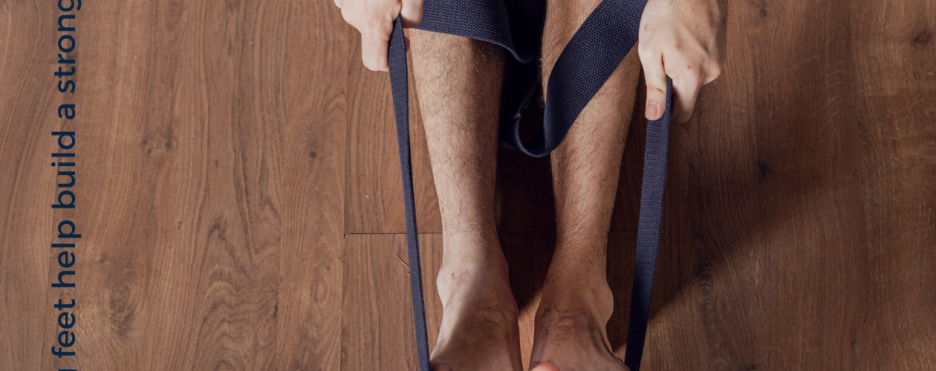We focus on our core, legs, arms, and back but rarely consider exercising and strengthening our feet. Good foot strength, structure, and mobility play a considerable role in keeping us mentally and physically healthy. We often take for granted that we can walk and move around relatively freely. If you cannot walk or move due to some foot injury or condition, you may become reliant on others for help, and your movement and abilities are limited. Just walking alone is great for your mental health and wellness. Movement is an essential element in health and wellness.
The feet deserve more credit than we usually give them. They have over 7,000 nerves, 26 bones, 33 joints, and 20 muscles, of which four layers contribute to movement and stability. The fascia must remain flexible enough to prevent inflammation and tightening of the muscles and tendons.
If our feet are not balanced, this can contribute to ankle, knee, hip, back, and even shoulder pain and issues.
Studies have found that we need at least 5,000 steps daily to maintain good mental health and wellness [1] and 7,500 steps daily to prevent Alzheimer's disease [2].
Building a strong foundation in your feet is important for not only day-to-day living but also for other exercises, sports, running, lifting weights, hiking, etc.
Include foot strength and stretch into your weekly routine.
You will need:
- Toes spacers/separators
- A resistance band
- Toe strengtheners (if possible or available in your area)
- 1 or 2 balls – spikey ball, golf ball or softer ball the size of a golf ball
- A step
-
Toe separation and strength
1.1. Can you separate all the toes from each other by widening the foot?
If you cannot separate your toes, use toe strengtheners to help 'pull' your toes apart. If you cannot find toe strengtheners, use your toe strength to try to spread the toes apart.
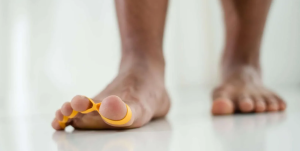
1.2. Can you lift the big toe while the other four toes are on the ground?
Place a resistance band under the big toe and pull it up while keeping the 4th toes on the ground.
1.3. Can you lift the other four toes while the big toe stays on the ground?
Place a resistance band under all four toes and pull them up while keeping the big toe on the ground.
2. Rolling a ball underneath your foot
2.1. Use either a spikey ball or a golf ball (or the size of a golf ball) and roll it underneath your foot to help loosen the fascia (and stimulate some reflex points too).
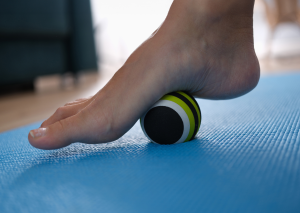
3. Stretching out the calf
This will also help keep the fascia flexible.
3.1. Simple lunge calf stretch with your hands against the wall. Stretching one calf at a time with one foot in front of the other.
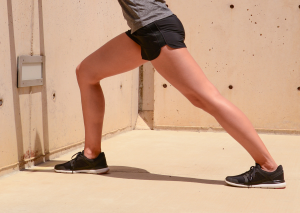
3.2. Place your toes on the edge of a step and pulse your foot down (support yourself on a rail or the wall to help with balance)
3.3. Sit up straight on the floor with your legs outstretched. Loop the resistance band around the ball of your foot, holding one end with each hand and pull towards you with a flexed foot and then a pointed foot.
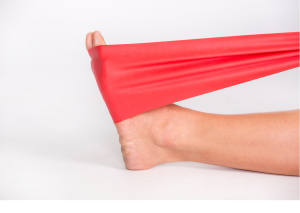
Other factors to consider:
- Walk barefoot or wear barefoot shoes – shoes with a wide toe box
- Key components of a barefoot shoe include wide toe boxes and a thin and flexible sole.
- If you suffer from bunions or neuromas, wearing toe spacers can assist.
According to Dr Courtney Conly, a chiropractor specialising in foot health, training in barefoot shoes will help strengthen your feet. She recommends wearing barefoot shoes to train and go about daily life, and on race day, your feet will feel stronger and less prone to injury[3].
If your favourite shoes have pointy toes, cushioned soles, and are fashionable but not functional, it’s fine to wear them for a few hours on a special occasion or if you're going out. But ideally, you should prioritise wearing or walking barefoot.
Chronic foot pain is not something that you should ignore. Unfortunately, I often have patients come to me for the first time after suffering months with chronic foot pain with little help from other professionals. Along with reflexology treatments, I would also recommend seeing a chiropractor who specialises in or is familiar with foot mobilisation and/or a podiatrist with more holistic thinking who would rather assist by recommending exercises and support instead of orthotics and surgery.
Sources:
[1] Psychology Today
[2] Healthline

